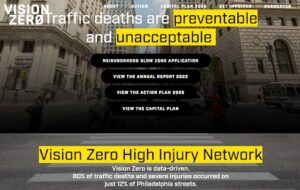What’s Going on in Philly?
Philadelphia is one of the oldest cities in North America and that begs the question: are older cities better for cycling? If we use the basis that Copenhagen was founded in 1167 then yes. If we ask the question: are older cities with carriage and pedestrian sized roads that are left intact better for cycling? Then yes again and that gives us Philadelphia. I watched the Alan Fisher otherwise known as the Armchair Urbanist Youtube’s Video Why Philadelphia’s Streets are better than other North American Cities. He is one of my favorite video creators and he tackles many issues other than cycling but as a Native Resident of Philadelphia and a cyclist he is rather adept and uniquely qualified for this topic. Quick Aside, it turns out he’s a senior at Rutgers in Mechanical Engineering. One of the tenets of William Penn’s original plan for the City of Philadelphia called for Appropriate Street width for the streets intended function. That means that streets were not uniform and they were not overbuilt. This means that today in Philadelphia most streets are only about 3-4 cars wide with many Alleys that are only 1 car width wide. This means that most neighborhood streets are able to have car parking on either side of a one way street with a speed limit of only 25 mph. While this still leaves dooring as a rather critical issue this forces most vehicles to drive very slowly along these corridors. These small streets filled with attentive drivers are able to make sharrows viable. Another thing that makes the streets of Philadelphia great is that the signals are on street corners which draws the attention of drivers to the pedestrians and Cyclists. Philadelphia has made great strides and has put a huge effort into what they are calling Vision 0 which is their initiative to reduce traffic deaths down to, well, Zero. They have generated revenue from redlight cameras, added around 450 E-Bikes to their Bikeshare, added 10 miles of protected bike lanes and 45 miles of total bike lanes in 3 years with 31 more miles on the way. There are 58 miles of total safety improvements. It is a really cool program that is very bold and tangible. The Philadelphia Bicycle Coalition also keeps a public map of all of the cycle related crashes over the past 10 years. This mix of bold advocacy, governmental support, and existing infrastructure propositions Philadelphia to become the cycling capital of North America in the coming decades.

- Categories: